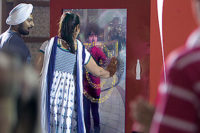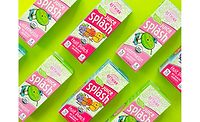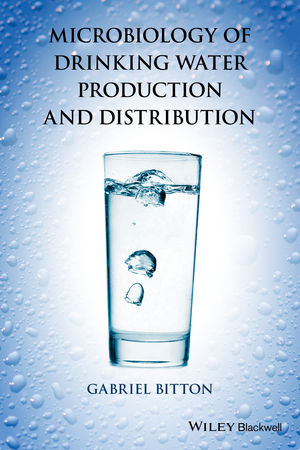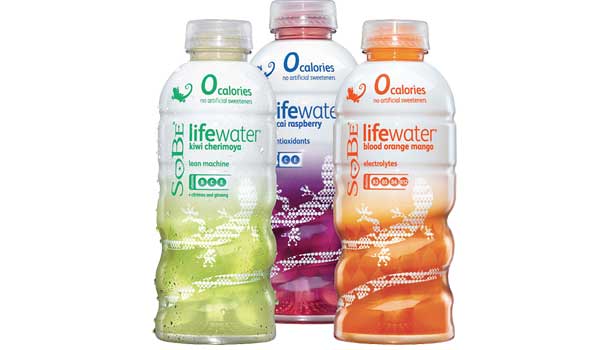Bottled water makes a splash
Unique ingredients can help category grow, experts say

PepsiCo’s SoBe Lifewater offers a zero-calorie version of the product line, which added three new flavors this year: Kiwi Cherimoya, Acai Raspberry and Blood Orange Mango.

New to the enhanced water market this year, 989 OnDemand releases nine essential vitamins, 84 ionic minerals and five electrolytes into the beverage by twisting the cap.

L.A. Aloe’s Aloe Gloe natural aloe water hit shelves last fall.

La Croix added flavor innovation to the sparkling water market this year with the launch of Peach-Pear.










In these times when budgets are tight, many consumers are finding that private label bottled waters quench their thirst just as well as branded waters. According to data from Chicago-based SymphonyIRI Group, private label products topped convenience still water sales at just more than $1 billion for the 52 weeks ending July 8 in supermarkets, drug, gas and convenience stores, and mass merchandisers, excluding Walmart, club and liquor stores. Overall, the category posted a 5.3 percent increase for $6.8 billion in sales with eight of the Top 10 brands reporting growth, SymphonyIRI reports.
When combined, the top three bottled water companies — Nestlé Waters North America, Stamford, Conn.; The Coca-Cola Co., Atlanta; and PepsiCo, Purchase, N.Y. — account for approximately 57 percent of the bottled water market, but together they lost 2 percentage points from February 2011 to February 2012 to private label, according to Chicago-based Mintel’s May 2012 report on bottled water in the United States.
“It comes down to value,” says Jonas Feliciano, beverage analyst at Euromonitor International, Chicago. If shoppers want a bottle of water, they will compare the prices and perceived value of brand names to private label, he says.
Due to cost savings and perceived similarities, some consumers — 25 percent — are seeking private label bottled waters, according to Mintel's report.
“The key for brands is [that] they’re going to have to show why they’re worth the premium price,” Euromonitor’s Feliciano says. Brands can highlight their unique natural spring and mineral water sources, which allow for increased value perception, he says.
Larger brands also can consider adding more value to their products by introducing citrus flavors or adding electrolytes, caffeine or other functional claims associated with sports and energy drinks to try to grab a share of that market, Feliciano suggests. However, companies will need to be cautious about taste or calorie changes that could isolate the typical health-conscious bottled water consumer, he warns.
Market overview
For 2011, overall bottled water sales totaled
$12.1 billion, growing 5 percent from 2006 to 2011, Mintel reports. During the recession, consumers opted for cheaper water alternatives, such as filtration devices, refillable bottles, private labels and reducing their higher-priced enhanced or flavored water consumption, according to the Mintel report.
Sales in the convenience/polyethylene terephthalate (PET) category accounted for more than three quarters of market sales and increased 7 percent from 2006 to 2011, according to the Mintel report. Enhanced and flavored bottled waters have been the primary growth driver for this category, it says. In fact, this sub-category dominated 24 percent of convenience bottled water for 2011, according to the report. However, the segment’s consumers, who typically prefer low- or no-calorie drinks, have more recently been deterred by these beverages’ high-calorie status, according to the report.
The low- and no-calorie status of many other bottled water products, on the other hand, tends to be a draw among health-conscious consumers. Playing on that and American dietary practices, Nestlé Pure Life launched its Hydration Movement. Started in 2010, the Nestlé Pure Life Hydration Movement has encouraged more than 99,000 families to make a commitment to swap one sugared beverage a day for water for an entire year, eliminating billions of calories from families’ diets to date, the company said in a statement. This year, the brand is expanding the movement to Facebook, offering $1-off coupons toward Nestlé Pure Life Purified Water and giving participants the chance to win a year’s supply of free Nestlé Pure Life bottled water.
Nestlé Pure Life reported an approximately 17 percent increase for more than $40 million in sales for 52 weeks ending July 8 in SymphonyIRI measured channels.
In addition to hydration, bottled water consumers are looking at taste. According to Mintel, 82 percent of bottled water shoppers report taste as the top attribute when buying bottled water, and only 4 percent think flavor is unimportant to consider, suggesting that companies should invest in consumer taste tests when marketing their products. The report also shows that 58 percent of bottled water buyers look for water from a unique source, such as a spring, which differentiates some brands from others.
Euromonitor’s Feliciano predicts 4 to 6 percent growth in current prices during the next five years, with rising oil prices, plastic and shipping costs, and decreased volume sales driving that increase. Similarly, Mintel predicts that the market will achieve 18 percent growth in current prices (8 percent in inflation-adjusted prices) from 2011 to 2016 with main growth coming from products that consumers perceive to be value-added, such as no-calorie enhanced waters, sparkling waters or waters from a unique source such as a spring.
Upgrading enhanced waters
According to both the Mintel report and Euromonitor’s Feliciano, enhanced waters have taken a hit because some health-conscious consumers worry about the calories in the beverages. SymphonyIRI data affirms that brands like The Coca-Cola Co.’s Glacéau Vitaminwater and PepsiCo’s SoBe Lifewater and Propel all experienced sales declines during the 52 weeks ending July 8 at approximately 4.6 percent, 6.3 percent and 10.8 percent, respectively.
However, all three of these brands have acknowledged this trend away from full-calorie enhanced waters and artificial sweeteners and adapted to include zero-calorie drinks in their portfolios. According to SymphonyIRI, Vitaminwater Zero saw an 11.6 percent increase in sales during the 52 weeks ending July 8. In total, zero-calorie enhanced waters also showed more growth overall in the market, according to the Mintel report.
“Coca-Cola realized that with Vitaminwater [it] had a good product, but health-conscious consumers were concerned about the calories,” Euromonitor’s Feliciano explains. “So Zero brought back some of those customers.”
Vitaminwater Zero varieties have zero calories and contain various vitamins and minerals including vitamins C, B5, B6 and B12. Vitaminwater Zero sales were more than $215 million, amounting to an increase of 11.6 percent for 52 weeks ending July 8 in SymphonyIRI measured channels.
Similarly, PepsiCo’s SoBe Lifewater offers a zero-calorie version of the product line, which welcomed three new flavors this year: Blood Orange Mango, Acai Raspberry and Kiwi Cherimoya. These three flavors as well as the other six flavors in the zero-calorie brand family also offer zero sugar, and select flavors offer varying amounts of vitamins B6, B12, C and E, niacin, pantothenic acid, chromium and magnesium.
Other new trends in the enhanced water category include using natural ingredients to add benefits to the beverages, Mintel reports. The market research firm found that a majority of consumers show a preference for enhanced and/or flavored waters without artificial sweeteners and sugar. In response to this trend away from artificial ingredients, companies have introduced products featuring coconut water and aloe vera to offer increased hydration and digestive health benefits. SoBe Lifewater’s new Pacific Coconut, Pomegranate Nectarine and Mango Mandarin drinks with coconut water hit shelves this year, and L.A. Aloe’s Aloe Gloe natural aloe water hit shelves last fall, according to the Mintel report.
Nearly 45 percent of the 114 new products in the enhanced water category for 2011 included antioxidants, Mintel reports. Breath-freshening, immunity, brain system support, beauty, bone health, digestive health and heart health function-related claims also have been featured in new enhanced water products this year, it adds.
Dispensing opportunities
Also adding an increased focus on health and wellness are functional waters with dosing caps. Brands like Karma Wellness Water, 989 On Demand, VBlast, Activate and others all offer consumers an interactive, healthy beverage experience. By twisting or pushing a button on the product’s cap, vitamins and minerals are released into the water, adding color and flavoring to the water as well.
When vitamins are exposed to heat, sunlight and a lengthy shipping process, their effectiveness is diminished, said Richard Zakka, chief executive officer of New York Spring Water Inc., New York, the maker of VBlast, in a statement. By keeping the vitamins sealed from the elements, the vitamins are fresher and offer more nutritional value to the consumer when mixed with the water, he said.
New to the capped enhanced waters market this year is 989 OnDemand from H2M Beverages LLC, Pompton Lakes, N.J. Available in Punch, Grape, Orange, Lemon Lime, Pomegranate Blueberry and Kiwi Strawberry flavors, the all-natural waters are sweetened with green leaf stevia and do not have any calories. The twist-release cap adds nine essential vitamins, 84 ionic minerals and five electrolytes to the beverage.
Also showing market growth is Karma Wellness Water from Karma Culture LLC, Pittsford, N.Y., which was previously available in the Northeast but launched nationwide in July. Karma is sweetened with stevia and offers 110 percent of the recommended daily allowances of multiple vitamins with just a push on the cap.
Adding more than flavor and vitamins to the market, Newport Beach, Calif.-based The Rising Beverage Co.’s Activate brand launched a marketing campaign this summer to encourage consumers to exercise more. The brand set up a Get Activated pop-up shop in Los Angeles to challenge the community to support the fight against obesity. Consumers were invited to ride a stationery bike, freestyle dance or weight-lift a year’s supply of Activate to earn bottles of the nutrient-enhanced, twist-cap water beverage. Facebook users both inside and outside of Los Angeles also were invited to participate by watching live feeds from the shop and sharing the campaign page with friends. Activate pledged to make a donation to the Get America Fit Foundation based on the promotion’s 1,217 Facebook shares and 34,028 bottles earned in the pop-up shop, according to its Facebook page.
In order for the enhanced water category to continue to grow, transparency is going to be key for beverage manufacturers, according to the Mintel report. Brands can increase consumer confidence in their products’ function-related claims by proving the credibility of such claims and then communicating the results with consumers, it states.
For companies looking to add innovation to the market, flavor variety also is an important factor, according to the Mintel report.
“The key for most beverage manufacturers is the ability to create good-tasting products that also provide consumers with an added functionality — the ‘Tastes good, but what does it do for me?’ consumer,” Euromonitor’s Feliciano says.
Brands can look to popular flavors in the alcohol beverage market for inspiration, the Mintel report suggests. If consumers enjoy a flavor in a calorie-dense beverage, they might also seek it out in low-calorie enhanced waters, it says.
A sparkling light
Providing growth opportunities, the sparkling water segment has seen impressive increases at nearly 30 percent in sales compared to last year with all brands in the Top 10 reporting growth, according to SymphonyIRI. In fact, Mintel predicts that sales will continue to increase 43 percent from 2011 to 2016.
Euromonitor’s Feliciano attributes this growth to consumers’ perceived product value. “The main thing is that it is a healthy alternative to soft drinks, even though it doesn’t necessarily have the flavor, sugar or sweetness content,” he says. “The lack of calories makes it more appealing to those seeking a healthy alternative to sugary drinks. And on top of it, there’s also a sense of value when you compare it to regular still water.” Unlike still water, you can’t get sparkling water from the kitchen tap, he adds.
Earlier this year, Sparkling Ice, a brand of Preston, Wash.-based TalkingRain Beverage Co., expanded its lineup of zero-calorie sparkling waters with the release of Pineapple and Lemonade. Sparkling Ice reported a sales increase of nearly 655 percent for approximately $69 million for 52 weeks ending July 8 in SymphonyIRI measured channels.
Brands like La Croix, a product of Sundance Beverage Co., a division of National Beverage Corp., Ft. Lauderdale, Fla., have positioned sparkling water brands as soda alternatives, capitalizing on consumer demands for healthier beverages.
“As people grew up on soda and their lifestyle trends migrated away from soft drinks, they're [now] looking for a healthier alternative,” says Vanessa Walker, director of strategic brand management for National Beverage Corp. “They’re still looking for the carbonation — that bite — they like the sensation, and still water doesn’t offer that.”
This strategy has worked for brands like La Croix, which grew more than 37 percent, according to SymphonyIRI.
Besides offering the carbonated sensation, sparkling waters are calorie-, sweetener-, sodium- and gluten-free, Walker says. She also notes that true sparkling waters do not have other functional claims, such as antioxidants or vitamins, because that can result in adding calories or other ingredients to the beverage.
La Croix targets health-conscious consumers, Walker says. “These are people who are running half-marathons; these are people who are choosing to go down the vegetable aisle; these are people who are concerned with whole grains, whole wheat and recyclability; these are people who are living La Croix — that’s what we call it,” she says. “The second they taste La Croix and they see that it is calorie-, sweetener- and sodium-free, they turn it around and see the nutrition panel. When they taste it, they realize, this is the brand for me.” These nutrition perks have transitioned sparkling water from an occasional beverage to an everyday commodity, she adds.
La Croix also added some flavor innovation to the market this year when it launched its new Peach-Pear flavor. “It’s interesting because Peach-Pear has a mass appeal, but it’s not an everyday combo,” Walker says.
Walker predicts that the once “sleepy little segment” of sparkling water will continue to boom. “I would say that sparkling water can be the volume of that of a diet soft drink,” she says. People are waking up to the benefits of sparkling water and beginning to switch, and sparkling water is going to become a necessity for retailers to carry in their stores, she adds. BI
Looking for a reprint of this article?
From high-res PDFs to custom plaques, order your copy today!
















